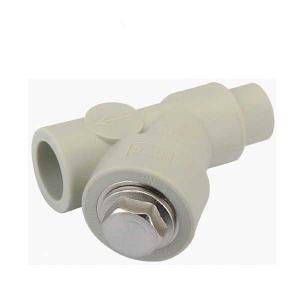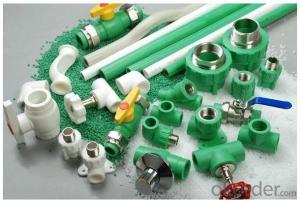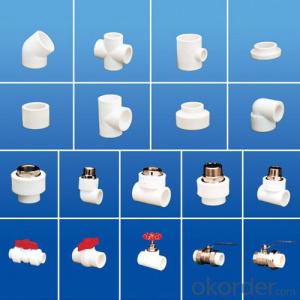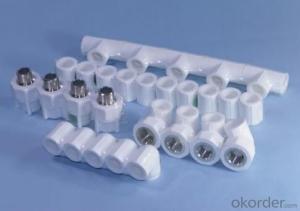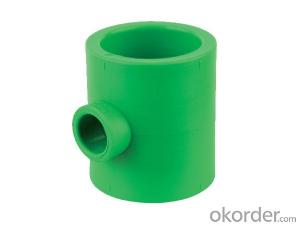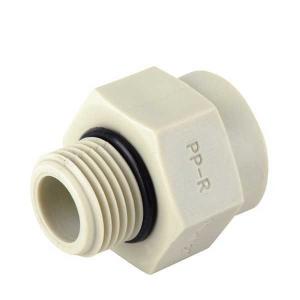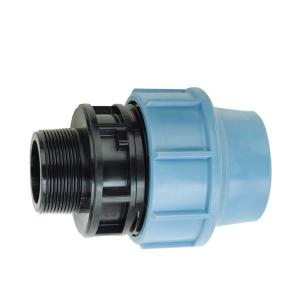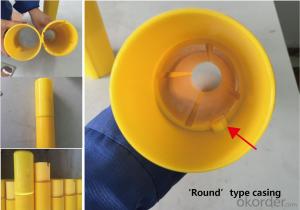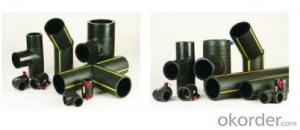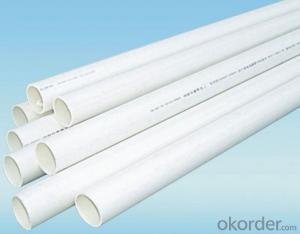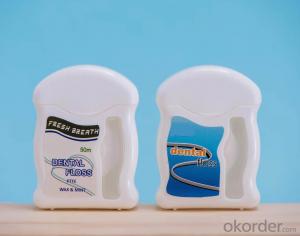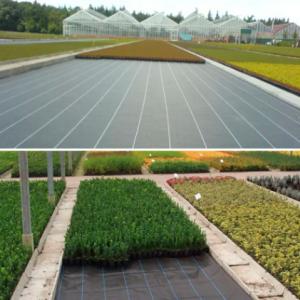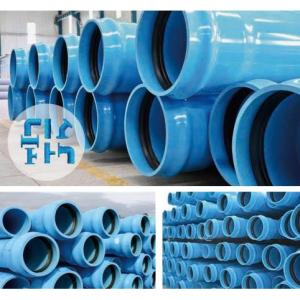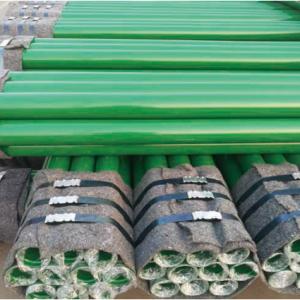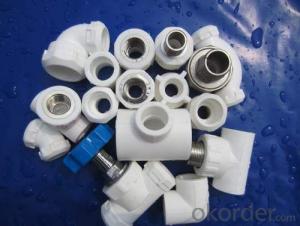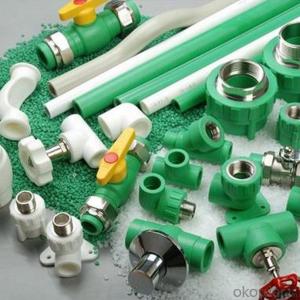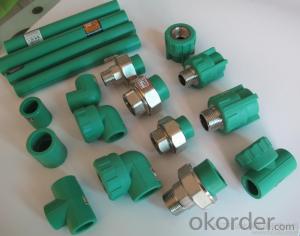PP-RC Filter A Type One-way valve-female
- Loading Port:
- Ningbo
- Payment Terms:
- TT or LC
- Min Order Qty:
- 1000 pc
- Supply Capability:
- 100000 pc/month
OKorder Service Pledge
OKorder Financial Service
You Might Also Like

1.Material:Random Polypropylene(Hyosung R200P);
2.ISO9001&ISO14001;
3.Standard:GB/T 18742.3-2002, DIN8077/8078;
4.OEM also ok
Specifications
Product name: PP-R One-way valve-female
PN25
Size: 20mm,25mm
Color:White,Grey,Green
PP-R Ball valve
Product advantages:
The product take the straight type, the radian fits together with human body finger and make slewing more labor-saving,the material use for ABS757,more strong and Sturdy,and easy for replace and instore,The handle have indicated the water on&off, and have the move-out brand,it could be OEM ,the colour,Could be made of white,grey,and green.
The valve body:
It have take the best fashion design from Europe,the plstic part made from PP-R(Korea Hyosung company),brass made from 58-3A.
Technical data:
1)starndard:DIN8077-8078
2)pressure:PN2.5Mpa
3)water temperature-30—+80°C
4)colour:white,green grey.
5)develop size:20-63
- Q:Are plastic pipe fittings resistant to impact and pressure?
- Yes, plastic pipe fittings are generally resistant to impact and pressure. They are designed to withstand the forces exerted on them during normal operating conditions, ensuring durability and reliability in various applications. However, the specific resistance may vary depending on the type and quality of the plastic used in the fittings.
- Q:How do you connect plastic pipe fittings to steel pipes?
- To connect plastic pipe fittings to steel pipes, you can use a transition fitting or a dielectric union. These fittings create a secure connection between the two different materials while preventing any corrosion or galvanic reactions. It is important to ensure that the fittings and pipes are compatible and properly installed to maintain a leak-free connection.
- Q:How do you remove plastic pipe fittings?
- To remove plastic pipe fittings, you can follow these steps: 1. First, turn off the water supply to the pipe you are working on. This will prevent any leaks or water damage during the removal process. 2. Use a pair of pliers or a wrench to loosen the fitting. Grip the fitting firmly and rotate it counterclockwise to loosen it. If the fitting is stuck or too tight, you can use a pipe wrench or adjustable spanner for more leverage. 3. Once the fitting is sufficiently loosened, you can try pulling it straight off the pipe. If it doesn't come off easily, you can use a pipe cutter or hacksaw to carefully cut the plastic pipe just above the fitting. This will allow you to remove the fitting without damaging the rest of the pipe. 4. After removing the fitting, inspect the pipe for any damage or debris. Clean the pipe and fitting ends thoroughly before installing a new fitting. Remember to take necessary precautions, such as wearing gloves and eye protection, as you work with tools and potentially sharp edges.
- Q:How do plastic pipe fittings handle expansion and contraction in long pipelines?
- Plastic pipe fittings typically handle expansion and contraction in long pipelines through their inherent flexibility and ability to accommodate thermal changes. These fittings are designed to withstand the expansion and contraction caused by temperature fluctuations without compromising the integrity of the pipeline. Additionally, they may incorporate features like expansion joints or flexible couplings that allow for movement and prevent stress on the system.
- Q:Can plastic pipe fittings be used for drinking water systems?
- Yes, plastic pipe fittings can be used for drinking water systems. However, it is important to ensure that the fittings are made from materials approved for potable water applications and meet the necessary standards and regulations to ensure the safety of the drinking water.
- Q:How do you connect plastic pipe fittings to galvanized steel pipes?
- To connect plastic pipe fittings to galvanized steel pipes, you can use a transition fitting that has threads to match the galvanized steel pipe on one end and solvent cement to connect the plastic pipe fitting on the other end.
- Q:Are plastic pipe fittings suitable for radiant floor heating installations?
- Yes, plastic pipe fittings are suitable for radiant floor heating installations. They offer various advantages such as flexibility, ease of installation, and resistance to corrosion. Additionally, plastic fittings are cost-effective and can withstand the high temperatures and pressures associated with radiant floor heating systems.
- Q:What are the common materials used for plastic pipe fittings?
- Common materials used for plastic pipe fittings include polyvinyl chloride (PVC), chlorinated polyvinyl chloride (CPVC), polypropylene (PP), and polyethylene (PE).
- Q:Are plastic pipe fittings resistant to electromagnetic interference?
- No, plastic pipe fittings are not generally resistant to electromagnetic interference.
- Q:Can plastic pipe fittings be used in greywater recycling systems?
- Yes, plastic pipe fittings can be used in greywater recycling systems. Plastic pipe fittings are commonly used in plumbing systems, including greywater recycling systems, due to their durability, affordability, and resistance to corrosion. They are compatible with various types of plastic pipes, such as PVC and CPVC, which are often used for greywater distribution. However, it is important to ensure that the plastic fittings and pipes used are rated for the specific application and meet all local plumbing codes and regulations.
1. Manufacturer Overview |
|
|---|---|
| Location | |
| Year Established | |
| Annual Output Value | |
| Main Markets | |
| Company Certifications | |
2. Manufacturer Certificates |
|
|---|---|
| a) Certification Name | |
| Range | |
| Reference | |
| Validity Period | |
3. Manufacturer Capability |
|
|---|---|
| a)Trade Capacity | |
| Nearest Port | |
| Export Percentage | |
| No.of Employees in Trade Department | |
| Language Spoken: | |
| b)Factory Information | |
| Factory Size: | |
| No. of Production Lines | |
| Contract Manufacturing | |
| Product Price Range | |
Send your message to us
PP-RC Filter A Type One-way valve-female
- Loading Port:
- Ningbo
- Payment Terms:
- TT or LC
- Min Order Qty:
- 1000 pc
- Supply Capability:
- 100000 pc/month
OKorder Service Pledge
OKorder Financial Service
Similar products
New products
Hot products
Hot Searches
Related keywords
